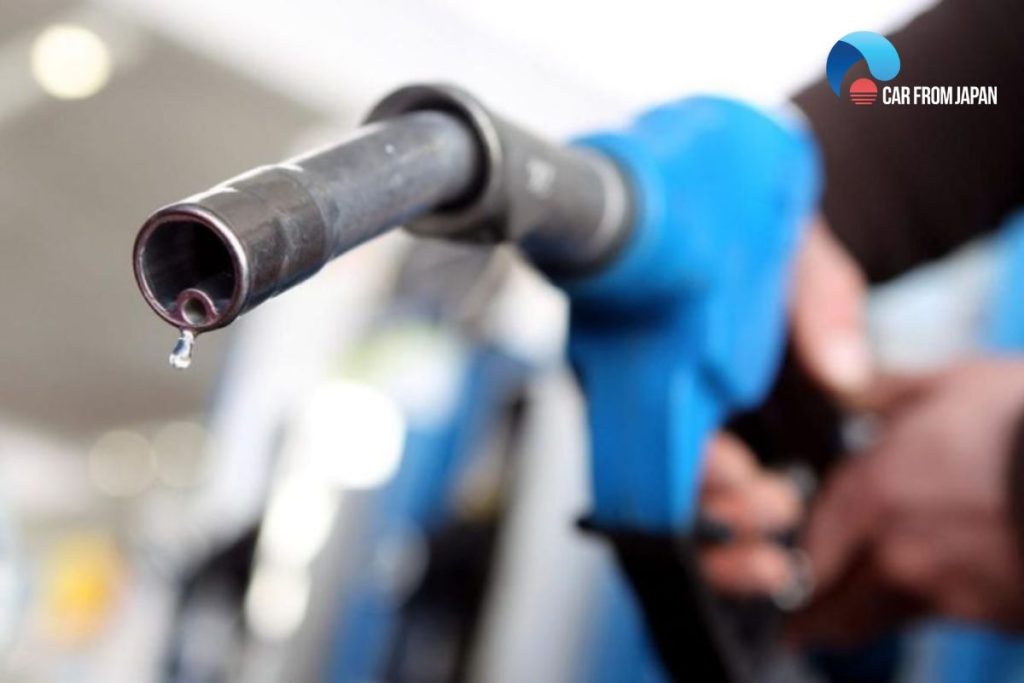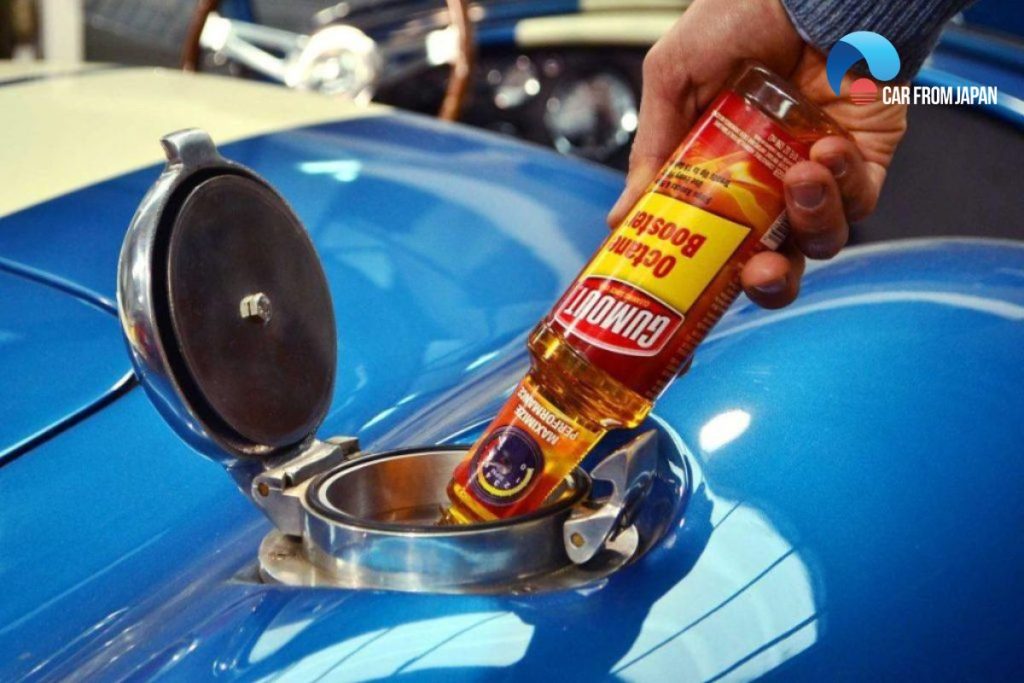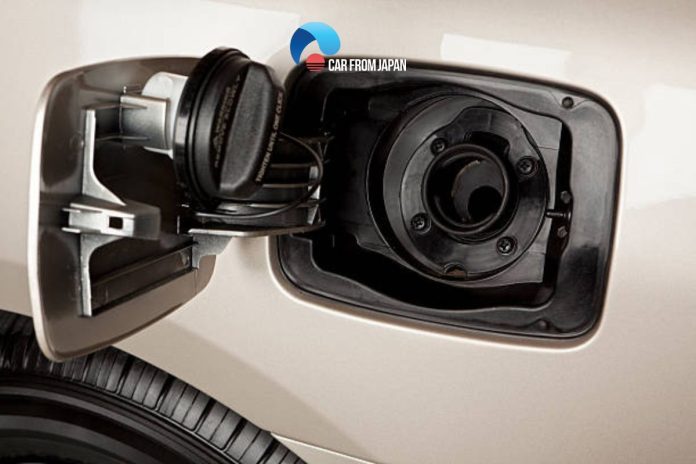Having water in the gas tank can degrade the engine’s performance by seriously affecting other parts like the fuel pipeline and its injectors. However, if timely attention is not given to the problem, it may eventually damage the car’s engine.
Therefore, it is pivotal to locate the water in gas tank symptoms and seek the essential maintenance tips that can save the engine from getting damaged.
Contents
- 4 Water in Gas Tank Symptoms
- Causes of Water in Gas Tank
- How to Fix Problem of Water in Gas Tank
- FAQs on Water in Gas Tank
- Can water in fuel cause stalling?
- How much water in a gas tank will cause damage?
- Can water in gas cause white smoke?
- Why does my car stall more often in humid or rainy weather? Could it be water in the tank?
- Why does my car jerk when accelerating but run fine at highway speeds?
- Is it true that water-contaminated fuel can freeze inside the tank or lines?
- Why does water contamination sometimes smell like alcohol or solvents at the fuel cap?
- Can water in gasoline mimic symptoms of a bad catalytic converter?
- Final Thoughts
4 Water in Gas Tank Symptoms
When water leaks into the gas tank, it will gradually reduce the performance of the fuel pump because it is not lubricated when operating.
If this problem is not corrected in time, the fuel system will be destroyed (rusting issues can also impact the fuel pump and fuel injector).
Meanwhile, the fact that gasoline is contaminated with water is easy to detect through basic signs.
Let’s find out what happens if water gets in your gas tank. These symptoms can give you a quick overview, even though they probably didn’t help you all that much.

Reduction in the car’s mileage
Water getting inside the car’s gas tank can decrease the motor’s power gradually. And, if it is not considered seriously, then, eventually, it would decrease the vehicle’s mileage, too.
Furthermore, it would cause the biodegradation of the fuel, which would make the car lose power.
Besides this, it is important to note that the water is heavier than the gasoline and sinks to the bottom of the tank, thus causing the container to rust. Owing to it, the microbes can grow inside the tank, which can destroy the whole system of fuel.
Sudden stalling of engine
Initially, for a few minutes, the engine won’t cause any issues. However, after a while, the process of fuel combustion would become weak and would start showing water in the gas tank symptoms.
Additionally, if there is a large amount of water in the fuel system, then it may stop the engine immediately.
Engine won’t start at all!
The simplest sign of water contamination is the engine not working. When the mixture of water and gasoline is transferred to the combustion chamber, it will cause hydraulic shock, and the piston is not lubricated, so it is difficult to move in the cylinder.
Since the four processes of loading, compression, explosion, and exhaust are not performed, the car is difficult to start or stall.
When the engine is damaged due to water-contaminated gasoline, drivers may have to have it at the garage at a small cost to return the car to normal operation.
Besides, when the water is present above the piston inside the car’s cylinder, which in turn doesn’t allow the piston to complete its rotation. Thus, it leads to no fuel combustion and compression.
Trouble accelerating the car
A rough acceleration or misfire is also one of the most typical signs when water is in your car’s fuel. If the car demands more force on the acceleration pedal to reach the desired speed while driving, then it’s a sign of poor acceleration.
In addition, it mainly occurs because of the water being injected into the engine instead of gas.
Causes of Water in Gas Tank
Be it a small cup or a bucket full of water inside the fuel tank, both can affect the engine’s performance. So, if you wish to save yourself from this problem, it is wise to prevent what causes it.
Some of the major causes are a condensation of atmospheric pressure, the poorly sealed cap on the tank’s top, and the bad top fuel pump.
In reality, your gas tank can become contaminated with water for several reasons, such as fueling at a gas station that is not of high quality or driving in a flooded area, causing temperature and humidity to condense in the gas tank…
All in all, while driving, if you experience revving or sputtering and delayed acceleration, this point towards water in the gas.
Hence, it is better to take timely action, or else the engine’s performance would degrade, causing more damage to it than imagined.
How to Fix Problem of Water in Gas Tank
After understanding all the water in gas tank symptoms, now it’s time to get rid of the water in the fuel system.
In this regard, one of the best and easiest solutions is to replace the entire gas within the reservoir.
This can be done by replacing the old fuel with a whole new high-quality gas that has no ethanol in it. The reason behind using this gas is its property of not absorbing water.
However, if you feel that it’s an expensive process, then there are certainly other steps: how to get water out of gas tank:
Use octane booster

Once you find the symptoms of water in the gas, you can exhaust it completely by using a high-level octane booster inside the gas reservoir.
Once injected, it would absorb all the moisture or water inside the tank, thus leaving it completely dry.
Put special fuel additives and methanol
No doubt, it is a less reliable solution when there is more water in the gas tank. But, if it’s only the moisture, then you can make use of these fuel driers, which are actually special fuel additives and methanol. Some of the fuel additives examples are Dri-Gas, DFS Plus, and Heet.
Information: Certain fuel driers use special agents to protect the sensitive material of old vehicles, whereas others simply use alcohol to remove the water. So, always think and look for the product specification prior to its purchase.
Make use of new filters
In case the water content inside the vehicle’s gas container is too high, then you not only have to replace the fuel but also the filters.
Tip: For all the above steps, it is suggested to take assistance from professionals unless you are aware of what you are doing with the vehicle.
Watch this video from WCPO 9 to learn what to do if water in your gas tank!
FAQs on Water in Gas Tank
Can water in fuel cause stalling?
Water in the fuel can cause a car to stall. Engines need fuel to burn, and water doesn’t combust.
If enough water gets into the engine instead of fuel, it disrupts combustion, causing the engine to run poorly, misfire, and eventually stall.
How much water in a gas tank will cause damage?
Your car’s engine can suffer from even minor water contamination in the fuel.
To illustrate, as little as half an ounce of water mixed into a 15-gallon gas tank can impair performance, worsen gas mileage, and potentially mean repair bills.
Can water in gas cause white smoke?
If water from the gas gets into the engine’s combustion chambers, it will turn into steam, which can appear as white smoke coming from the exhaust.
This is different from white smoke caused by burning coolant, but it’s a possible symptom.
Why does my car stall more often in humid or rainy weather? Could it be water in the tank?
Absolutely. Condensation inside the fuel tank increases in damp weather, and if enough collects at the bottom, it enters the fuel system and causes stalling.
Why does my car jerk when accelerating but run fine at highway speeds?
Water is heavier than gasoline and tends to settle. During acceleration, fuel slosh may send water-rich fuel into the system briefly, causing hesitation.
Is it true that water-contaminated fuel can freeze inside the tank or lines?
Yes. In cold climates, water in fuel can freeze, blocking lines or filters and causing a no-start condition until thawed.
Why does water contamination sometimes smell like alcohol or solvents at the fuel cap?
Because many gas stations add ethanol (alcohol) to fuel, which absorbs water. Excess water creates a sour, alcohol-like odor at the filler neck.
Can water in gasoline mimic symptoms of a bad catalytic converter?
Yes. Surging, hesitation, and poor power delivery from water in fuel can feel similar to a clogged cat, leading to expensive misdiagnosis if overlooked.
Final Thoughts
To minimize the problem of water-contaminated gasoline, drivers should pay attention not to fill petrol at poor quality gas stations, limit driving in deep flooded areas, and do not spray water into the engine compartment when washing the car.
If the vehicle is found to have water in gas tank symptoms, replace the fuel immediately, rinse the fuel tank, and clean the related parts in turn to reduce serious damage to the engine and fuel system!




I really need to know about the solution of water mix3d with petrol in fuel tank its e300 mercedese 2015 I am very worried what steps should be taken or the process so that no damage could be done to the car
I am highly obliged if u answer my query